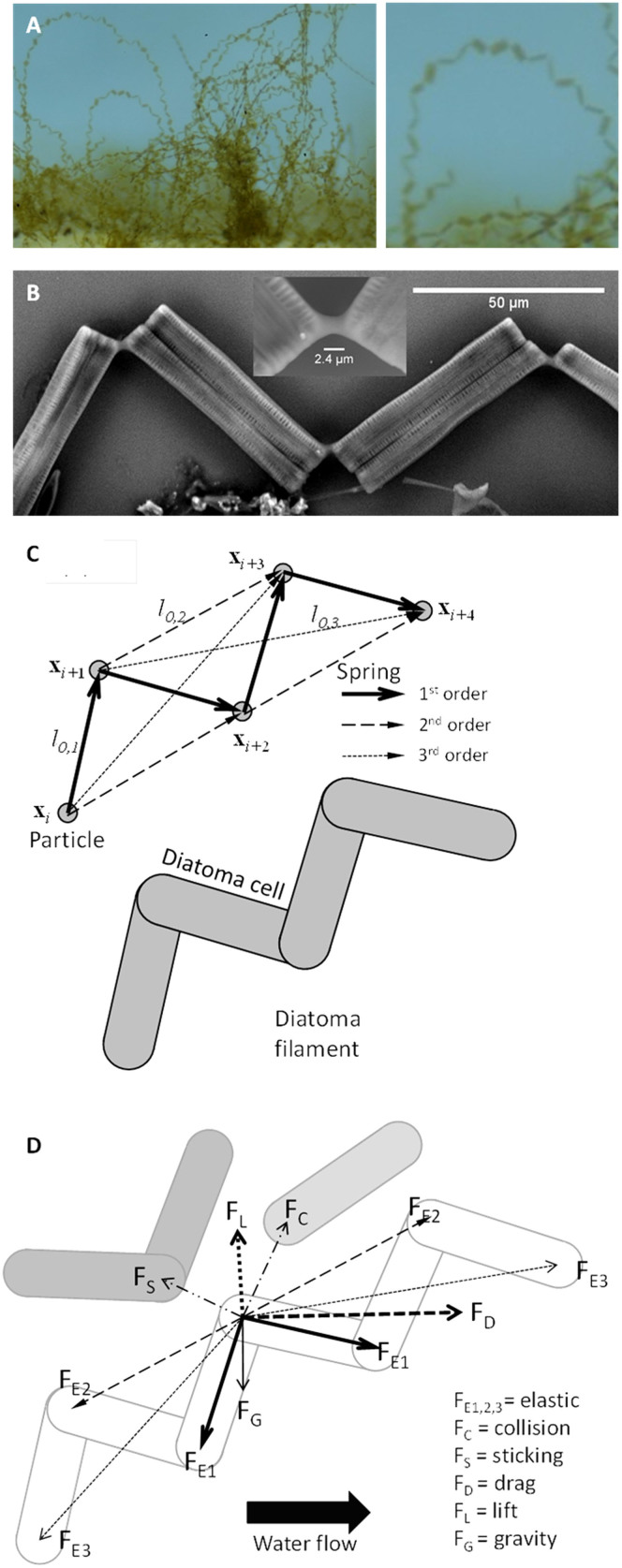Figure 2.
(A) At the trough, Diatoma form bows in the flow. A magnified version of a bow is shown. (B) Scanning electron micrograph of a chain zigzag. The stiff mucilage pads between individual cells are evident. (C) Mass-spring model of zigzagged chains of Diatoma cells. First-order springs oppose the tensile deformation of a cell, second-order springs keep the angles between cells by opposing bending and third-order springs impede torsion in the zigzag chain. Each Diatoma cell makes up one portion of the chain. (D) Representative schematic of the overall force balance acting on a particle. Elastic forces are exerted by primary, secondary and tertiary springs (FE). The drag (FD) and lift (FL) forces are exerted by the water flow. Gravity (FG) is applied as well on apparent masses, thus accounting also for buoyancy. Repulsive collision forces (FC) and sticking spring (FS) may also act between different cells.

